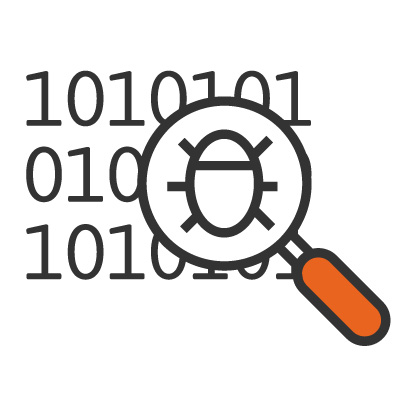False Positives and Negatives: The Plague of Cybersecurity Software
Many resources are wasted when your IT department is forced to sift through the avalanche of security threats that are triggered daily to locate and respond to false negative or positive security alerts.
“Close to half of security analyst teams battle false positive rates of 50% or higher from their security tooling. Meantime, another report from the Ponemon Institute shows that as much as 25% of a security analyst’s time is spent chasing false positives—sifting through erroneous security alerts or false indicators of confidence—before being able to tackle real findings.
That means that every hour an analyst spends on the job, they’re wasting 15 minutes on false positives. On average, the typical organization wastes anywhere between 424 hours and 286 hours per week on false positives.“
Bitdefender.com
At best, your analysts put in hours of work that could have been dedicated to more meaningful tasks when an alert turns out to be a false positive. At worst, true cybersecurity threats can be missed when busy IT departments aren’t able to spare the resources needed to examine every potential threat.
A policy that encourages employees to disregard security threats, no matter how small, can leave your company vulnerable to data privacy breaches and other cyber attacks.
Whether your network analysts are spending too much time on false positives or neglecting to recognize false negatives, when actual cyber threats go unnoticed, fear not.
The good news is that an effective solution is within your reach. Advances in cybersecurity have led to a new generation of smart technology that can help you proactively combat the issue of both false negatives and positives.
How can you combat false positives and negatives?
There are several approaches to consider when it comes to reducing the number of bogus security threats, including network analysis, enacting policies that reduce the opportunity for cyber attacks, beefing up your overall security measures, and taking a look at how modern AI technology could help.

Analyze Network Traffic
Look through information in your network logs to spot unfamiliar usernames, odd connection details, and suspicious trends in the duration and frequency of communication to uncover security threats the old-fashioned way. You may be able to detect more false negatives than if you hadn’t looked, but this process is prone to suffer from human error and can become quite time-consuming.

Limit Network Access on IoT DevicesAs a matter of protocol, consider implementing a policy that limits the network access of IoT devices. These devices have become common targets for cybercriminals looking for a way in, and they typically don’t require much access to function properly. When IoT devices are given restricted network access, your security software is more likely to recognize unusual behavior and should issue more accurate alerts.

Use Web Application FirewallsA large percentage of data breaches are targeted at web application vulnerabilities. While the commonly-deployed Web Application Firewall can reduce these instances, this type of firewall can hog network resources when used to detect false negatives and positives. The related slowdown can reduce the firewall’s effectiveness in quickly alerting staff to authentic threats or slow network traffic to an unacceptable level.

Research Artificial Intelligence SolutionsMixMode tackles the problems associated with false positives and negatives through the power of modern AI advancements. Its context-aware AI monitors your network to gain a baseline understanding of your systems and how they have been used.
MixMode is smart enough to learn about your network and accurately sort and prioritize security warnings so your IT professionals can tackle real threats as they emerge. You’ll have fewer security threats to analyze manually because the AI will have detected both false positive and negative threats before they make it to your team.
Reducing the number of false positives from the start can save you needless headache. Your analysts will feel energized and refocused when they can make better use of their talents. You may even notice an uptick in productivity.
Equipping your network security team with a tool that will help them better analyze emerging trends and widespread security threats will leave your company less vulnerable to actual security breaches. The MixMode interface is intuitive, robust, and is always updated with the most up-to-date security data available.
No Security Program is Perfect
While it would be impossible to fend off every false positive and negative security threat, modern solutions utilizing modern tech (like MixMode’s context-aware AI) can greatly reduce the number of threats that need further investigation.
What was once a stressful, labor-intensive task can become a manageable, productive process.
MixMode Articles You Might Like:
How MixMode’s AI Builds Your Network’s Baseline
Turning the Unsupervised Tables on the Turing Test
Featured MixMode Client Success Story: HighCastle Cybersecurity
Top 5 Ways AI is Making Cybersecurity Technology Better
What is Network Detection and Response (NDR)? A Beginner’s Guide
The Tech Stack Needed to Start an MSSP Practice: Firewall, SIEM, EDR and NDR


